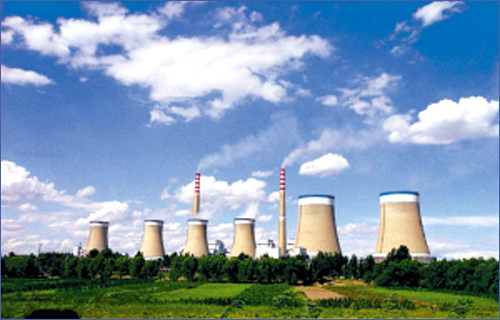Despite goal, country releases more pollutants
 0 Comment(s)
0 Comment(s) Print
Print E-mail
China.org.cn, China Daily, October 12, 2011
E-mail
China.org.cn, China Daily, October 12, 2011
China has lost ground on its resolve to emit less nitrogen oxide this year.
Even though the country planned to reduce its annual emissions of the pollutant by 1.5 percent in 2011, it in fact released 6.17 percent more nitrogen oxide in the first six months of the year than it had in the same period a year ago, according to statistics from the Ministry of Environmental Protection.
|
Even though China planned to reduce its annual emissions of the pollutant by 1.5 percent in 2011, it in fact released 6.17 percent more nitrogen oxide in the first six months of the year than it had in the same period a year ago, according to statistics from the Ministry of Environmental Protection. |
The failure to control nitrogen emissions, which are a large cause of acid rain and smog, shows the difficulties the country will face in its attempt to battle pollution without shifting away from its reliance on heavy industries, environmental experts warned.
|
Don't miss: |
Nitrogen oxide, which stems mainly from coal-fired power plants and vehicle emissions, can irritate the lungs and lower people's resistance to influenza and other respiratory infections.
Hou Yuxuan, an analyst with CI Consulting, a Shenzhen-based industry research firm, said a lot of money has been invested since the beginning of the year in businesses that use a lot of energy and that has contributed to the increase in pollutant emissions.
"A delay in the thermal power industry's nitrogen removing efforts is a large reason for the increase in nitrogen emissions," he said.
Ma Jun, director of the Institute of Public and Environmental Affairs, agreed.
"Emissions of nitrogen oxide have been on a steady increase in the past several years, and it will take a rather long period of time to reverse that trend," he said.
Dealing with vehicles' nitrogen emissions is even more difficult, he said.
In the first six months of the year, emissions of sulfur dioxide, another harmful air pollutant, have fallen by 1.74 percent below what they were in the same period the year before. Meanwhile, two measures of water pollution - chemical oxygen demand and the presence of ammonia nitrogen - decreased by 1.63 percent and 0.73 percent respectively.
From 2011 to 2015, China hopes to reduce its emissions of nitrogen oxide and ammonia nitrogen by 10 percent below what they were in 2010, and to cut emissions of sulfur dioxide and chemical oxygen demand by 8 percent during the same period.
The fact that emissions were not cut as much as desired at the start of this year should be a reminder to officials that the country's current mode of development cannot be sustained, said Ma.
"With the economy expanding at breakneck speed, emissions are still set to increase if the country cannot shift away from its over-reliance on fossil energy to fuel its development," he said.
Between 2006 and 2010, China spent heavily on equipment used to treat pollution. Emissions of sulfur dioxide were subsequently reduced by 14.29 percent and chemical oxygen demand by 12.45 percent.
Even so, the effects of such spending will gradually diminish over time and the potential for further emission reductions will be small, Ma warned. In such difficulties, the only recourse is to switch to a mode of development that has less of an effect on the environment, he said.
"There has been much talk about restructuring the economy over the years," Ma said. "But I don't see that really happening."






